Throughout it existence Everlight has been engaged in fine chemical production, and at the same time, has been facilitating the national economy and social welfare through international cooperation and worldwide marketing. In essence, Everlight contributes to global harmony and the quality of life.
Despite its intended cause, the industry in general has been receiving appalling image due to the byproducts from chemical wastes that had contributed to global warming, pollution and other negative effects.
With the initiative that was commissioned by the United Nations in 1987 under the umbrella of ‘sustainable development’, ECIC had initiated its own program of ‘green accounting’ in hope that it would be able to accurately evaluate an eco-friendly and resource productivity by means of the introduced system and to provide reliable information for setting business strategies. The main purpose was to modify the system by including the environmental expenditure categories suggested by Taiwan Institute of Economic Research, such as wastewater, emission, waste, toxic materials and others.
At the outset, the initiative did not provide any significant improvement to the existing set-up than the previous system. But, with the modifications that had been undertaken once in 1999, and again in 2002, that had included six categories that had been applied in the new green accounting system such as upper/lower stream cost, management activity cost, business area cost, research and development costs, social activity costs, and environmental damage costs, the improvements were very significant that included both to the environment and the bottom line results to ECIC itself.
Under aggregation and valuation, the SEEA uses both monetary values and physical weights to this end. In the case study applied market valuation mostly to natural resource depletion, environmentalists criticize use the market values for ‘pricing the priceless’ categories of nature. In the absence of market prices for non-produced natural assets, natural resource rents earned by selling resource outputs in markets are used for estimating the net present value and value changes of an asset.
In accounting indicator and sustainability, the popular 'green GDP' accounts only for natural capital consumption, ignoring the depreciation of produced ('fixed') capital. Subtracting both natural and produced capital consumption from capital formation obtains Environmentally-adjusted net Capital Formation (ECF). Meanwhile, the material flow accounts cater to a different sustainability concept. They assess material throughput as an environmental impact or pressure indicator. At the macro-level the increase of productive wealth is the key determinant of the economic growth potential of an economy. A particular strength of green accounting is the measurement of environmental cost caused by economic agents of households and enterprises.
He is responsible for Government Affairs, Public Relations, and Corporate Social Responsibility. He spends quite a bit of time on government relations. And he also try to make sure that their voice is heard in the media on a range of issues that relate to Starbucks in China. CSR in China helps to oversee the national CSR China Education programs and also working with their stores on local CSR programs in the communities. They call their employees “partners”, who are very enthusiastic about CSR work in their neighborhood. He also has a great team in CSR and locally who are truly dedicated to CSR in their heart.
For the store partners, they undergo several weeks of extensive training as well as apprenticeship on the job and understand the core values of Starbucks. The purpose is to understand the company, so they can delivery “legendary Starbucks service” with a passion and dedication to each other, customers, and to the community. For those do not work in stores, they will try to get as many possible to work in a store for a few days to get a flavor of the store life. They have cultural immersion in Seattle for management team to gain insight of Starbucks’ history and the values they represent. In addition, the coffee master program is designed for partners to gain sufficient coffee knowledge.
They have six CSR specialists representing different markets which include South China, North China, Southwest China, East China, Hong Kong and Taiwan. They actively identify store partner volunteer programs that would make a difference in the community and help bring diverse local social needs to the attention of the Greater China office. Starbucks maintains a good relationship with local communities and local governments.
Passion and integrity are the most important qualities for a person. He believes that Skill and knowledge can always be acquired through training if the person has a great heart and the passion towards what they are doing. His advised to other foreign or domestic retailers and franchisers who are looking to enter the China market to be always flexible and adapt to special Chinese environment. But too much flexibility at the risk of losing core attention will lead to failure.
CSR in Starbucks is everywhere. They have a US$5 million China Education fund to help unprivileged children in obtaining basic education. So far 1.5mil US dollars have been committed to the China Soong Ching Ling Foundation for rural teachers training and scholarship and for poor students enrolled in Teachers’ universities. They also committed US$600,000 to China Women’s Federation for water education for women living in drought stricken parts of China on Global Water day this year.
Environmental issues were first added to the Government’s political, economic and social agenda in the 1980s when increasing concern were expressed over failing environmental trends under rapid economic growth. The original Environmental Preservation Act was replaced with more specific environment legislation relating to environmental policy, air quality preservation, water environment preservation, noise and vibration control, dangerous chemicals controls, environmental pollution damage dispute, solid waste management and marine environment. Under the environmentally sound and sustainable development strategy (ESSD), the main concepts include proper valuation of the environment, extension of the time horizon of development to include long-term benefits and costs, and equity concerns.
The framework of KORSEEA was designed to assess these functions, especially when new scarcities of natural resources may threaten sustained economic productivity and degradation of environmental quality may impair the waste combination capacity of environmental sinks. KORSEEA reflects the accounting structure of the SEEA and is tailored to the environmental concerns and data availability in Korea. KORSEEA is derived by adding to the Supply and Use Table (SUT) and produced assets accounts of the central System of National Accounts (SNA). Asset accounts for non-produced “economic” and “environmental” assets are compiled both in physical and monetary terms. Non-produced economic assets include nonrenewable natural resources, such as land and minerals, and renewable resource such as forest and fish. Asset accounts for environmental assets record only the cost of discharge of residuals into the different environmental media of land, air and water.
An estimation result for the System of Integrated Environmental and Economic Accounts (SEEA) in Korea followed the basic framework and was based on data availability given in the previous sections. The estimates here do not reflect the exact EDP (environmentally adjusted net domestic products) or EVA (environmentally adjusted net value added) of Korea due to a lack of consistency in the estimates stemming from data availability and the limitation of accounted environmental assets covered.
The present study implemented a system of integrated environmental and economic accounting for Korea (KORSEEA) with existing statistics. The compilation of the accounts served the purposes of training national staff, identifying data sources and gaps, and presenting first results and analyses of the environmentally modified national accounts. Filling the data gapes and establishing coordination data producers would be facilitated by the permanent institutionalization of environmental accounting in Korea.
As a conclusion, this study has some limitations. Firstly, this case study covers only degradation of natural environment caused by agricultural activities and does not take into account quantitative depletion of natural assets, which may be the future topic in this field. Secondly, multi- functional (positive) effects of agriculture, such as flood control and amenity, are not considered in the environmental effects of agriculture because these effects are usually valued at non-market prices which are not consistent with the market price valuation.
uA new catchphrase is reverberating within Taiwan's business community--corporate social responsibility (CSR). Corporations around the world are realizing they have a responsibility to be good citizens, and Taiwan companies are taking heed. In addition to making profits, corporations must bear a responsibility to society. In 2002 the Taiwan government began promoting CSR to educate Taiwan businesses. In its push to become a member of the Organization for Economic Cooperation and Development (OECD), the government translated the OECD Guidelines on Multinationals into Chinese.
For Delta Electronics, Inc., environmental protection is an integral part of its corporate culture. The world's number one producer of switching power supplies, Delta instituted lead-free manufacturing in 2000. It was a case of doing well by doing well. A CSR committee was formed by top management, including the chairman, the CEO, and the COO of the company.
The motivation for a CSR program can come from within the company or from outside. Top managers may opt to dedicate the company to a particular issue because of a personal interest. Delta's chairman and founder, Bruce Cheng, was enthusiastic about initiating a CSR program since he has long favored energy-saving and environmentally-friendly technologies.
In conclusion, CSR is rapidly permeating global business. There are many Taiwan companies that manufacture products sold by Major European, US and Japanese brands. The major brands are held to account by the media, stockholders and customers, and theresponsibility flows downstream.
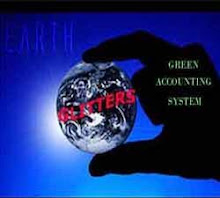
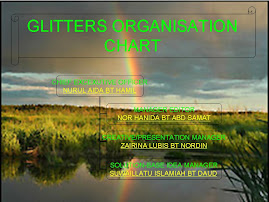
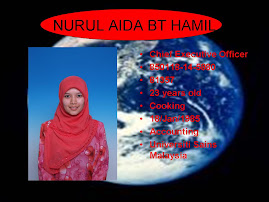
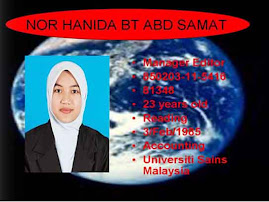
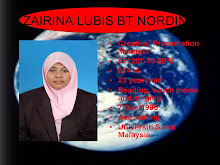
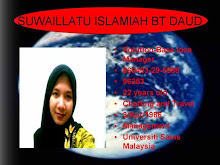


.jpg)
.jpg)
.jpg)
.jpg)


No comments:
Post a Comment